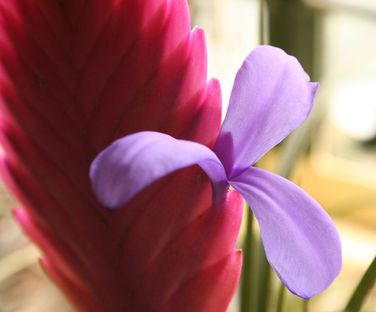- Home
- Join us! Membership
-
Meetings/Events
- Past: July 2024
- Past: May in the Garden
- Past: April 2024
- Past: February 2024
- Past: January 2024
- Past: December 2023
- Past: Nov. 2023
- Past: Oct. 2023
- Past: Sept. 2023
- Past: July 2023
- Past: May Tour
- Past: June 10-11 Show & Sale
- Past: April 2023
- Past: March 2023
- Past: February 2023
- Past: January 2023
- Past: Oct. 2022
- Past: Sept. 2022
- June Show & Sale Balboa Park
- Past: May 2022
- World Brom Conference 2022
- Past: April 2022
- Past: March 2022
- Past: Feb 2022
- Past: Dec. 2021 Plant Sale
- Past: Dec 2021
- Past: Nov 2021
- Past: Expo at SD Botanic Garden
- Past: August 2021
- Past: July 2021
- Past June 2021
- Past: May 2021
- Past: April '21
- past: March '21
- past: February '21
- past: January '21
- Past: December
- Past: October
- Past: September
- Past: November
- August Coffee in the Brom Garden
- Past Newsletters
- Videos
- About Us/Past Events
- Bromeliad Genera
- Links
- Growing Tips

How much light do bromeliads need?
That depends a lot on the type of bromeliad. Knowing the genus that the plant belongs to within the bromeliad family can tell you a lot about its requirements. A simple rule of thumb that works for most cases is: "Soft leaf - soft light, hard leaf - hard light." If the leaves of your plant are soft and flexible and especially if they are spineless (like Guzmanias and Vrieseas), they probably grow in the shady understory in the wild and would do best in a lower light area. Those plants with stiffer (usually spiny) leaves (like Aechmeas and Neoregelias) or "airplants" like Tillandsias enjoy bright, filtered light. There are some plants that will tolerate full sun but most like a little protection.
That depends a lot on the type of bromeliad. Knowing the genus that the plant belongs to within the bromeliad family can tell you a lot about its requirements. A simple rule of thumb that works for most cases is: "Soft leaf - soft light, hard leaf - hard light." If the leaves of your plant are soft and flexible and especially if they are spineless (like Guzmanias and Vrieseas), they probably grow in the shady understory in the wild and would do best in a lower light area. Those plants with stiffer (usually spiny) leaves (like Aechmeas and Neoregelias) or "airplants" like Tillandsias enjoy bright, filtered light. There are some plants that will tolerate full sun but most like a little protection.
Pay attention to your plants and they will tell you if they are unhappy. If a plant is being grown in too little light, it will often lose the bright colors that it had when you bought it. In addition to turning greener (adding chlorophyll) to make the most of the lower light level, many plants will start growing much longer leaves increasing their surface area to compensate. If your plant starts getting "leggy", try moving it (gradually) to a brighter area. The plant will respond by regaining its color and "tightening up" to form a dense rosette with shorter leaves.
On the other extreme, too much light can be the culprit if the plant's color starts fading or "bleaching". If brown, sunburned spots start appearing on the portions of the leaves, it is a clear indication that the plant is getting too much light. Sometimes a plant that should be able to take more light fades or burns when placed in a sunny area. The plant might have been living in dimly lit conditions before you obtained it. You can work it out into brighter conditions in stages to acclimate the plant.
On the other extreme, too much light can be the culprit if the plant's color starts fading or "bleaching". If brown, sunburned spots start appearing on the portions of the leaves, it is a clear indication that the plant is getting too much light. Sometimes a plant that should be able to take more light fades or burns when placed in a sunny area. The plant might have been living in dimly lit conditions before you obtained it. You can work it out into brighter conditions in stages to acclimate the plant.
Photo from HK James Ho
- Home
- Join us! Membership
-
Meetings/Events
- Past: July 2024
- Past: May in the Garden
- Past: April 2024
- Past: February 2024
- Past: January 2024
- Past: December 2023
- Past: Nov. 2023
- Past: Oct. 2023
- Past: Sept. 2023
- Past: July 2023
- Past: May Tour
- Past: June 10-11 Show & Sale
- Past: April 2023
- Past: March 2023
- Past: February 2023
- Past: January 2023
- Past: Oct. 2022
- Past: Sept. 2022
- June Show & Sale Balboa Park
- Past: May 2022
- World Brom Conference 2022
- Past: April 2022
- Past: March 2022
- Past: Feb 2022
- Past: Dec. 2021 Plant Sale
- Past: Dec 2021
- Past: Nov 2021
- Past: Expo at SD Botanic Garden
- Past: August 2021
- Past: July 2021
- Past June 2021
- Past: May 2021
- Past: April '21
- past: March '21
- past: February '21
- past: January '21
- Past: December
- Past: October
- Past: September
- Past: November
- August Coffee in the Brom Garden
- Past Newsletters
- Videos
- About Us/Past Events
- Bromeliad Genera
- Links
- Growing Tips
